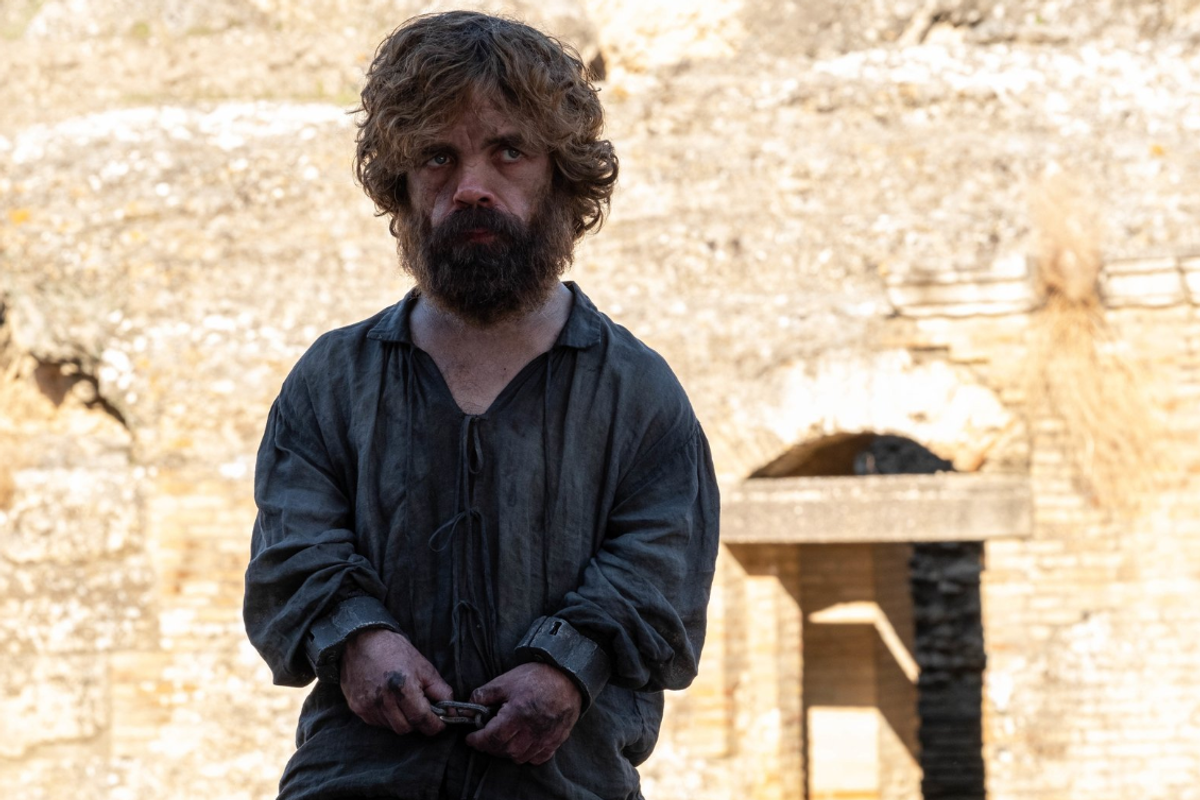Brit shares the one-word 'dead giveaway' that American actors can't do an English accent
“There is one word that is a dead giveaway that an English character in a movie or a TV show is being played by an American."

Peter Dinklage on "Game of Thrones"?
When it comes to actors doing accents across the pond, some Americans are known for their great British accents, such as Natalie Portman ("The Other Boleyn Girl"), Robert Downey, Jr. ("Sherlock Holmes"), and Meryl Streep ("The Iron Lady"). Some have taken a lot of heat for their cartoonish or just plain weird-sounding British accents, Dick Van Dyke ("Mary Poppins"), Kevin Costner ("Robin Hood: Prince of Thieves") and Keanu Reeves ("Bram Stoker's Dracula").
Some actors, such as Tom Hardy (“The Drop”) and Hugh Laurie (“House”), have American accents so good that people have no idea they are British. Benedict Townsend, a London-based comedian and host of the “Scroll Deep” podcast, says there is one word that American actors playing characters with a British accent never get right. And no, it’s not the word “Schedule,” which British people pronounce the entire first 3 letters, and Americans boil down to 2. And it’s not “aluminum,” which British and American people seem to pronounce every stinking letter differently.
@benedicttown The one word American actors aways get wrong when doing an English accent
What word do American actors always get wrong when they do British accents?
“There is one word that is a dead giveaway that an English character in a movie or a TV show is being played by an American. One word that always trips them up. And once you notice it, you can't stop noticing it,” Townsend says. “You would see this lot in ‘Game of Thrones’ and the word that would always trip them up was ‘daughter.’”
Townsend adds that when British people say “daughter,” they pronounce it like the word “door” or “door-tah.” Meanwhile, Americans, even when they are putting on a British accent, say it like “dah-ter.”
“So top tip if you are an actor trying to do an English accent, daughter like a door. Like you're opening a door,” Townsend says.
What word do British actors always get wrong when doing American accents?
What is the cot-caught merger?
One commenter noted that the problem goes back to the cot-caught merger, when Americans in the western US and Canadians began to merge different sounds into one. People on the East Coast and in Britain pronounce them as different sounds.
“Depending on where you live, you might be thinking one of two things right now: Of course, ‘cot’ and ‘caught’ sound exactly the same! or "There’s no way that ‘cot’ and ‘caught’ sound the same!” Laura McGrath writes at DoYouReadMe. “As a result, although the different spellings remain, the vowel sounds in the words cot/caught, nod/gnawed, stock/stalk are identical for some English speakers and not for others.” For example, a person from New Jersey would pronounce cot and catch it as "caht" and "cawt," while someone from Los Angeles may pronounce them as "caht" and "caht."
To get a better idea of the big difference in how "caught" and "cot" are pronounced in the U.S., you can take a look at the educational video below, produced for a college course on linguistics.
- YouTube youtu.be
American actors owe Townsend a debt of gratitude for pointing out the one thing that even the best can’t seem to get right. For some actors, it could mean the difference between a great performance and one that has people scratching their heads. He should also give the commenters a tip of the cap for sharing the big word that British people have trouble with when doing an American accent. Now, if we could just get through to Ewan McGregor and tell him that even though he is fantastic in so many films, his American accent still needs a lot of work.
This article originally appeared last year.



